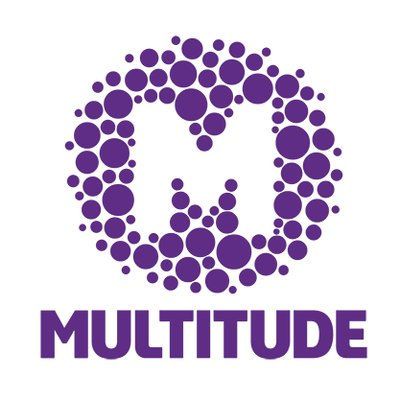Request Demo
Last update 08 May 2025
CD44 x Tubulin
Last update 08 May 2025
Related
4
Drugs associated with CD44 x TubulinTarget |
Mechanism CD44 inhibitors [+1] |
Active Org. |
Originator Org. |
Active Indication |
Inactive Indication- |
Drug Highest PhasePhase 1/2 |
First Approval Ctry. / Loc.- |
First Approval Date20 Jan 1800 |
Target |
Mechanism CD44 inhibitors [+1] |
Active Org. |
Originator Org. |
Active Indication |
Inactive Indication- |
Drug Highest PhasePhase 1 |
First Approval Ctry. / Loc.- |
First Approval Date20 Jan 1800 |
Target |
Mechanism CD44 inhibitors [+1] |
Active Org. |
Originator Org. |
Active Indication |
Inactive Indication- |
Drug Highest PhasePreclinical |
First Approval Ctry. / Loc.- |
First Approval Date20 Jan 1800 |
7
Clinical Trials associated with CD44 x TubulinNCT06782334
Phase 1/2 Study of AMT-116 in Patients with Advanced Solid Tumors
The purpose of this study is to evaluate the safety and efficacy of AMT-116 monotherapy in subjects with advanced solid tumors. The study is divided into two parts: the part I is dose escalation and the Part Ⅱ for expansion.
Start Date07 May 2024 |
Sponsor / Collaborator |
CTR20240804
评价一种自主研发的ADC药物 AMT-116 在晚期实体瘤患者中的I/II期研究
[Translation] A Phase I/II study evaluating AMT-116, an independently developed ADC drug, in patients with advanced solid tumors
评估自主创新的抗体偶联药物AMT-116在晚期实体瘤患者中的安全性和耐受性以及抗肿瘤活性的研究
[Translation]
A study to evaluate the safety, tolerability and anti-tumor activity of the innovative antibody-drug conjugate AMT-116 in patients with advanced solid tumors
Start Date24 Apr 2024 |
Sponsor / Collaborator |
NCT05725291
First-in-Human, Phase 1 Study of AMT-116 in Patients With Advanced Solid Tumors
This first-in-human study will evaluate the Maximum Tolerated Dose (MTD) / the Recommended Phase 2 Dose (RP2D), safety, tolerability, anti-tumor activity, pharmacokinetics, pharmacodynamics and immunogenicity of AMT-116, in Patients with Advanced Solid Tumors
Start Date25 Jul 2023 |
Sponsor / Collaborator |
100 Clinical Results associated with CD44 x Tubulin
Login to view more data
100 Translational Medicine associated with CD44 x Tubulin
Login to view more data
0 Patents (Medical) associated with CD44 x Tubulin
Login to view more data
95
Literatures (Medical) associated with CD44 x Tubulin01 Mar 2025·European Journal of Medicinal Chemistry
Design and synthesis of isatin derivative payloaded peptide-drug conjugate as tubulin inhibitor against colorectal cancer
Article
Author: Zhang, Yongmin ; Li, Yanping ; Wang, Zhaoyang ; Oumata, Nassima ; Xiang, Cen ; Teng, Yuou ; Yuan, Mengzhen ; Yu, Peng ; Sun, Guoyang ; Liu, Zhen ; Wang, Jinjin ; Wang, Ning ; Liu, Futao ; Yu, Jiajia
01 Mar 2024·Biochemistry and Biophysics Reports
Systems biology approach to identify biomarkers and therapeutic targets for colorectal cancer
Article
Author: Sadat Kalaki, Niloufar ; Ajdarkosh, Hossein ; Mobasheri, Meysam ; Karbalaie Niya, Mohammad Hadi ; Najafi, Mohammad ; Ahmadzadeh, Mozhgan
04 Jan 2024·Clinical Kidney Journal
Single-cell transcriptomes of kidneys in a 6-month-old boy with Denys-Drash syndrome reveal stromal cell heterogeneity in the tumor microenvironment
Article
Author: Shen, Qiyang ; Wu, Haiyan ; Zhou, Jiangfeng ; Zhang, Mingshun ; Cheng, Rui ; Li, Tao ; Gao, Xiucheng
Analysis
Perform a panoramic analysis of this field.
login
or

AI Agents Built for Biopharma Breakthroughs
Accelerate discovery. Empower decisions. Transform outcomes.
Get started for free today!
Accelerate Strategic R&D decision making with Synapse, PatSnap’s AI-powered Connected Innovation Intelligence Platform Built for Life Sciences Professionals.
Start your data trial now!
Synapse data is also accessible to external entities via APIs or data packages. Empower better decisions with the latest in pharmaceutical intelligence.
Bio
Bio Sequences Search & Analysis
Sign up for free
Chemical
Chemical Structures Search & Analysis
Sign up for free




